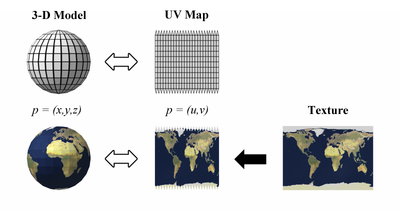That's generally how a UV map should look. You need to think about what shape on the image represents what shape on the model, and you can set it out to help you do that.
Here's a good explanation of a spherical UV map

It's best if you take up the entire UV space (512x512, 1024x1024, whichever you're using etc. Using powers of 2 is best)for a spherical map.
I'd recomend working in a format other than bmp for textures. Something like png, jpg, tga, or dds will work best (that's almost in order of 'work bestest', or at least my personal opinion).
As for tutorials for UV mapping, particularly a sphere, I don't think you'll have much luck trying to find tutorials. Spheres are generally very easily mapped, and isn't really something a tutorial would teach you to do, because of how simple it is, but perhaps that's just me talking. As long as you can find the UV unwrapper for your modelling package, you should be able to look around and easily unwrap a sphere. Anything beyond that, or a cube, then you may need a tutorial.
Hope you can get it sorted. Post your UV map and model if you want so we could have a look at it and help you get it working properly. I'd be happy to help